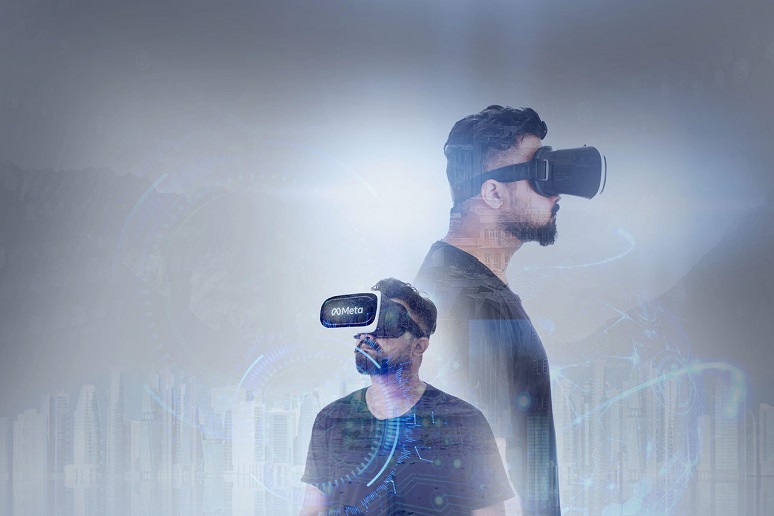Show me an enterprise on the planet that believes technologies like social media, smartphones, and the Internet haven’t shaped how their workers do their work—there likely isn’t one. Even if communication and collaboration practices from these new areas aren’t pulled directly into business applications and relationships, they shape how people live, influencing how they expect to work. The metaverse has been a hot topic lately. The question is, are enterprises anticipating the metaverse to change how they collaborate? Not so far.
Since
Facebook transitioned to Meta, I’ve connected with over two dozen enterprise contacts on metaverse. Only one member of the group felt that the metaverse would influence their communications and collaboration practices. They even offered commentary on the points Meta’s CEO Zuckerberg made on the subject, and their comments were informative, saying the least.
"Here we are in 2021, and all of our devices are still built around apps, not people," said Zuckerberg, a problem that businesses have rejected. Even the lockdown, which focused more on personal communications, had workers collaborating on something, and that’s the point.
At Facebook Connect, during Zuckerberg’s keynote, he commented that a good metaverse use case combined texting with virtual F2F (virtually, of course) conversations. Enterprises were equally skeptical. “Does this mean the metaverse people don’t have real jobs, or just aren’t doing them?” one enterprise asked.
How about customer interaction? Sales organizations’ comments were also highly negative. Here, the problem was feeling like you could never hope to make a metaverse avatar present human-like body language, which they believed would diminish the value of in-person sales contacts.
In social media, the goal is the interaction itself; it’s not called social media for nothing. For Microsoft, the emphasis in the metaverse represents not just the interaction or the people—but also that critical “what-they-collaborate-on” focus in some metaverse form.
Which is what, exactly? Microsoft shared a video during Ignite 2021 that depicts a team working on a product design. In augmented reality (AR), the team is represented as a hologram, while in a fully-virtual metaverse, it's a virtual image of the real product. This shift of emphasis is important because it illustrates that you have to focus on the target of collaboration and its representation. If you’re collaborating on a document or presentation, there wouldn’t be any value to providing an alternative representation in the metaverse. If you’re collaborating on a blueprint, a product design, as I’d suggested, then a representation of that blueprint/design would be easier to work with than the raw documents we’d use on a Teams call today.
You could have avatars in the Microsoft metaverse, and the company says it’s working on ways to sync the avatars with the people they represent to make them more useful. In short, to make even avatar body language mimic real people. The real problem, though, isn’t the avatars (
Nvidia’s Omniverse is good at turning people into avatars) but in synchronizing avatars to people when there’s a lot of latency. Edge computing isn’t the answer when “the edge” is smeared all over the globe in a multi-national conference.
I think that the global-sync capability would shift Microsoft from an augmented reality view (where the product gets represented as a hologram via AR goggles) to a true virtual-reality view (where the product and collaborators all represent the real world), i.e., digital twins.
Breaking the metaverse into two stages of implementation takes a big step toward making it practical as a business tool. We might imagine the “digital product” avatar to be generated as a 3D model on the screen first, changing to reflect the changes made by those involved in the collaboration. We could move the digital product from screen to hologram with AR goggles, bringing it closer to the collaborators.
We could also imagine that the people involved in a Microsoft Teams call would ease into the metaverse, perhaps first as holograms and then as avatars, as we improved our ability to sync the avatars to our physical movements and expressions. Microsoft suggests that we could introduce real-time translation to the metaverse, perhaps as those cartoon bubbles of conversation associated with a speaker, or replacing the speaker’s words with translations suitable for each of the other participants.
How Microsoft seems to prioritize metaverse elements could be the critical difference between its vision and that of Meta. Not only is Microsoft’s approach more logical from a business collaboration perspective, but it’s also much easier to implement because it doesn’t require real-time synchronization of human and avatar behavior. It doesn’t even require humans to be represented by avatars. You could even shift the generation of “digital product” avatars from AR goggles to laser holograms in a meeting room, offering a hybrid work model.
Would Meta be likely to follow Microsoft’s approach with its own metaverse? I don’t see how digitizing an object facilitates social interaction, and as I’ve already noted, Meta sees its metaverse as an evolution of social media. However, recent TV commercials from Meta suggest the company is creating a metaverse where live human images mix with a gaming-like background. Down the line, the implementation of the two metaverse models could converge.
The big question on the converging-metaverse front is whether there’s a value to having an avatar represent a person in a collaborative relationship. A lot of heavy lifting is necessary to synchronize the avatar with the person, including the need to have body sensors or image interpretation and processing in real-time. If the goal of a metaverse-avatar is to be a realistic human equivalent, wouldn’t a simple video representation of the real person be best? If the goal is to allow someone to be represented by an avatar that doesn’t mirror their own appearance, aren’t we sowing the seeds of not trusting who we see because we’re not really seeing them? Or setting up collaborative deep-fakes? We may not resolve this issue quickly, but it’s clear that metaverses will go forward without personal avatars, if necessary.
Make no mistake—we’ll eventually see a metaverse collaboration. We still can’t say for sure what it will look like in the end, but it might be fun. It will surely change how we live and work.










